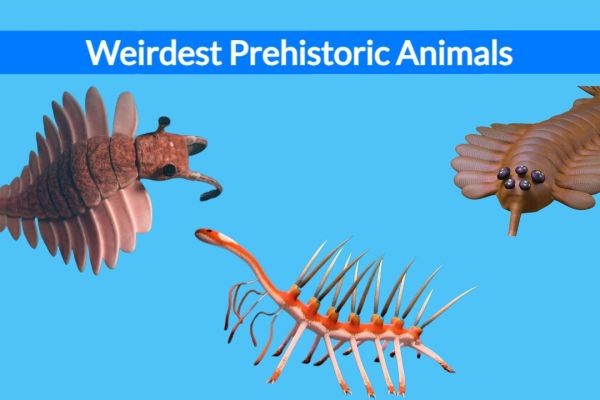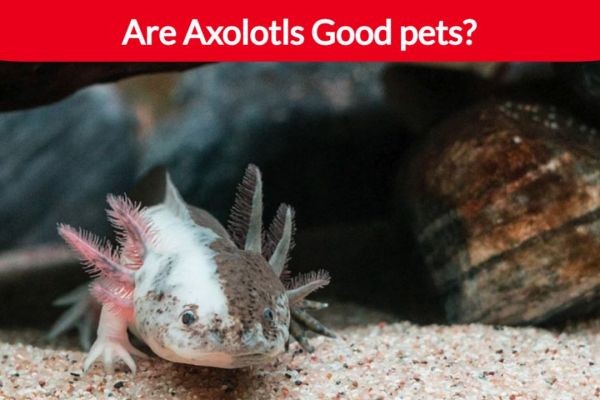Uncover the echidna's distinct traits like keratin-based spines, electroreceptors, and egg-laying habits. Learn about their fascinating reproductive and defense mechanisms. Read now!
08/15/24 • 64 Views
You'd find the echidna fascinating due to its distinct qualities among mammals. Its robust body covered in keratin-based spines, and a snout equipped with electroreceptors for detecting prey, showcase its uniqueness. Unlike most mammals, echidnas are monotremes, meaning they lay eggs. The males exhibit a rare four-headed penis, enhancing mating efficiency. Additionally, after laying a single leathery egg, the female incubates it in her pouch where the young, called a puggle, develops. Their ability to ingest soil for nutrients and their specialized predatory defense of curling into a ball underline their unique adaptations. Exploring further might uncover more intriguing aspects of their biology and ecological roles.
Key Takeaways
- Echidnas are monotremes, meaning they are rare mammals that lay eggs instead of giving birth to live young.
- They possess electro-receptors in their snouts, enabling them to detect prey through electrical signals.
- Male echidnas feature a distinctive four-headed penis, which is unique among mammals.
- Their spiny protection and ability to roll into a ball for defense are unusual traits for mammals.
- Echidnas are equipped with a long, sticky tongue to capture ants and termites, adapting to diverse diets and habitats.
Echidna Physical Traits
Echidnas, with their robust bodies and keratin-based spines, exhibit a range of specialized physical traits that aid in both defense and foraging. These spines, sturdy and sharp, serve as an indispensable defense mechanism, allowing echidnas to deter predators by rolling into an armored ball. The keratin composition provides durability and resistance, crucial for their survival in wild habitats.
Your attention might also be drawn to their unique appearance, characterized by a distinct snout and a long, sticky tongue, adaptations that facilitate their diet of ants, worms, and larvae. This tongue can extend and retract rapidly, capturing prey with high efficiency—a remarkable feature among mammals.
Moreover, echidnas possess strong hind limbs equipped with large, curved claws. These aren't merely for show; they're essential for digging. Whether burrowing into the ground to escape threats or excavating soil to reach their insect prey, these claws are vital tools in their survival kit.
Unique Reproductive Habits
- As you explore the reproductive habits of echidnas, you'll find their methods quite distinctive among mammals.
- The female echidna's ability to lay a single leathery egg is an exceptional trait, placing them among the few egg-laying mammals, known as monotremes.
- Additionally, the male echidna features a four-headed penis, each head functioning alternately to optimize sperm delivery and increase genetic variation within the species.
Four-Headed Penis Function
In the world of male echidnas, the four-headed penis plays an important role in maximizing reproductive success by alternating between heads during mating, thereby enhancing genetic diversity among offspring. This remarkable mechanism allows male echidnas to shut down two heads while using the others, ensuring mating efficiency and boosting their chances of passing on their genes during the breeding season. This unique adaptation not only optimizes their reproductive fitness but also contributes significantly to the genetic variability within the population.
Here's how the four-headed penis benefits male echidnas:
- Maximized Mating Opportunities: Each head can be alternated, providing fresh sperm and reducing wear during copulation.
- Increased Genetic Diversity: By alternating heads with different mates, genetic diversity is enhanced, which is vital for species survival.
- Enhanced Reproductive Success: Alternating usage prevents exhaustion of any one head, maintaining reproductive performance.
- Specialized Adaptation: This unique feature is specifically evolved to boost reproductive outcomes in challenging environments.
- Efficient Use During Breeding Season: It ensures every mating opportunity is utilized, maximizing reproductive potential.
This specialized reproductive strategy is a testament to the evolutionary ingenuity of echidnas, making them a unique study subject in mammalian reproduction.
Egg-Laying Mammals
Building on their remarkable reproductive adaptations, echidnas also exhibit another rare trait among mammals: they lay eggs. As members of the monotremes, a small and unique group of mammals, echidnas share this distinctive reproductive strategy with only one other creature, the platypus. This egg-laying behavior underscores their biological uniqueness and points to a significant evolutionary divergence from other mammalian lineages.
After mating, female echidnas undergo a short gestation period of approximately 10 days, after which they lay a single, leathery egg. This egg is then deposited into a specialized pouch on the mother's abdomen, where it remains incubated until hatching. The emergence of the young from the egg marks the beginning of its life as a puggle, a term specific to young monotremes, highlighting the uniqueness of their developmental stages.
The puggle stays within the safety of the mother's pouch, feeding on milk and continuing its development until it's mature enough to survive outside. This phase within the pouch is vital, as it provides the necessary protection and nourishment in the early, vulnerable stages of the puggle's life. The echidna's egg-laying trait not only sets it apart from the vast majority of mammals but also serves as a fascinating example of how diverse reproductive strategies can be among mammals, reflecting a broad spectrum of evolutionary histories and adaptations.
Egg-Laying Mammals
- You might find it fascinating that echidnas, as monotremes, exhibit a rare reproductive trait among mammals: they lay eggs.
- These eggs are incubated in the mother's pouch, a specialized structure where the single egg is kept safe until hatching.
- The emerging young, known as a puggle, continues its development within the security of the pouch, a process that underscores the unique adaptations of echidnas in their evolutionary niche.
Monotreme Reproductive Traits
Echidnas, as monotremes, are distinguished by their rare reproductive strategy of laying a single egg, which is incubated in the mother's abdominal pouch. Unlike placental mammals, echidnas exhibit a unique form of mammalian reproduction that's more reminiscent of reptilian or avian practices. This distinct approach underscores their classification as one of the few egg-laying mammals, setting them apart in the animal kingdom.
Here are key aspects of the echidna's reproductive traits:
- Monotreme Method: Echidnas are one of the only mammals to lay eggs, sharing this characteristic with the platypus.
- Egg Incubation: After a short gestation period of about ten days, the egg is carefully kept in the pouch, where conditions are optimized for development.
- Pouch-Rearing: Post-hatching, the young echidna, termed a puggle, remains in the pouch, gaining nourishment and protection until it matures.
- Gestation Period: The remarkably brief gestation period is a notable trait among mammals, most of which have longer periods of fetal development inside the womb.
- Unique Mammal: These reproductive traits contribute to why echidnas are considered one of the most unusual mammals.
Understanding these aspects helps you appreciate the exceptional nature of the echidna in the context of evolutionary biology and mammalian diversity.
Puggle Development Process
After mating, a female echidna lays a single egg, initiating the fascinating developmental journey of the puggle within her pouch. As a prominent egg-laying mammal, the echidna's unique reproduction process unfolds when the soft-shelled egg, delicately deposited in her pouch, hatches after about ten days. The emerging puggle, blind and hairless, clings to the nourishing security of its mother's pouch.
In this protected environment, the puggle receives maternal nourishment directly from specialized pores in the skin, as echidnas lack conventional teats. Instead, milk is secreted through these pores, ensuring the puggle remains hydrated and well-fed during its critical early development phase. You'd observe the puggle safely tucked away for approximately 53 days in the pouch, during which it undergoes significant physical transformations.
Around the 45 to 55-day mark, a distinct feature begins to emerge: the spines. This spine growth marks a pivotal development stage, preparing the puggle for life outside the pouch. By the time the young echidna is 7 months old, it's sufficiently matured to venture out independently, though echidna care continues until it fully adapts to its surroundings. This extended nurturing period highlights the intricate balance of independence and dependence in echidna's developmental strategy, embodying their unique place among mammals.
Diet and Foraging Behavior
Their specialized diet consists primarily of ants, termites, and insect larvae, which they capture using a long, sticky tongue adept at flicking rapidly to ensnare prey. Your study of echidnas reveals a fascinating adaptation where their tongues, extending up to 15 centimeters beyond their snouts, aren't just long but coated in sticky saliva. This glue-like secretion is essential for effective prey capture, enabling them to slurp up their food with remarkable efficiency.
The echidna's foraging behavior is supported by several unique adaptations:
- Long Tongue: Allows them to reach deep into insect nests.
- Sticky Saliva: Enhances the adhesion of ants and termites to the tongue.
- Electro-receptors: These specialized sensors detect slight electrical signals emitted by their prey, guiding the echidna to food sources hidden beneath the surface.
- Soil Ingestion: Occurs as they dig for prey, which also helps in grinding down food and absorbing nutrients.
- Monotreme Characteristics: Being one of the few egg-laying mammals, their biological and foraging traits are distinct from most other mammals.
These specialized traits not only define their dietary habits but also underscore their classification as monotremes, setting them apart in the mammalian world with their ant and termite diet and complex nutrient intake mechanisms.
Habitat and Distribution
Spanning a range from scrubland and desert to montane forests, echidnas' habitats demonstrate their remarkable adaptability across various Australian, Tasmanian, and New Guinean environments. As you explore their distribution, you'll find that in Australia, short-beaked echidnas are adept at traversing through an array of terrains from arid deserts to lush coastal heathlands. Their ability to thrive in such diverse environments isn't only fascinating but also proof of their evolutionary resilience.
In Tasmania, these creatures adjust to even cooler climates, inhabiting both lowland areas and the more challenging snowy mountain regions. This versatility highlights their exceptional adaptability to different climatic conditions. Moving to New Guinea, echidnas inhabit montane and sub-alpine forests, areas that starkly contrast the Australian deserts yet are equally challenging.
Their habitats are characterized by complex ecological requirements. Echidnas are known to shelter in caves, rock crevices, and burrows, which are essential for their survival in extreme weather conditions and as a refuge from potential threats. The overlapping territories seen in echidna populations further emphasize their flexible nature in habitat utilization, ensuring they maximize the resources available in their diverse environments.
Predators and Defense Mechanisms
Despite their solitary nature, echidnas face threats from predators like feral cats, foxes, and snakes, necessitating highly evolved defense mechanisms. As you explore the survival strategies of echidnas, you'll find their spines play an essential role. These aren't just any hair structures; they're specialized, sharp, and form an effective defense against the attacks of predators.
When danger approaches, echidnas utilize a unique method of protection by rolling up into a ball. This posture shields their softer, vulnerable parts, exposing only their intimidating spines. Their ability to sink vertically into the ground, often locking into place with their strong claws, further enhances their defense, making them a challenging target for predators.
Here are some key points about echidna defense mechanisms:
- Spines: Specialized hair structures that deter predators.
- Rolling up: A defensive posture that protects vulnerable areas.
- Locking into the ground: Utilizes claws to anchor into the soil, increasing security.
- Pointing spines: Can orient spines in various directions, depending on the threat.
- Unique behaviors: Includes tucking their head and legs to minimize exposure.
These specialized defense mechanisms underscore why echidnas are considered unique among mammals, showcasing their adapted strategies to evade predation effectively.
Conservation Efforts
Conservation efforts for echidnas are pivotal, focusing on protecting their diverse habitats from threats such as habitat loss, pollution, and predation. These initiatives are essential in mitigating human impact and promoting sustainable practices vital for the survival of this unique mammal. By understanding and addressing the intricate balance of their ecosystems, you contribute to a broader strategy aimed at preserving not only echidnas but also other native species that share their environment.
In South Australia, for instance, the co-management of national parks underscores a collaborative approach to safeguarding natural habitats. This synergy between conservationists and local authorities ensures that the ecosystems supporting echidna populations are maintained and protected from adverse human activities. Additionally, integrating knowledge about marine park ecosystems enriches our understanding of how different environmental components interact to support diverse wildlife, including echidnas.
Through such conservation measures, the aim is to maintain the ecological integrity of the areas where echidnas thrive. Preserving these habitats helps guarantee that echidnas, along with other native flora and fauna, can continue to play their roles within the ecosystem. Hence, each step taken towards echidna conservation is a stride towards sustaining the biodiversity that's crucial for ecological health and resilience.
Lifespan and Development
Understanding the lifespan and developmental stages of echidnas provides insights into their remarkable longevity and reproductive strategies. Echidnas exhibit an impressive lifespan, particularly in captivity, where they can live up to 58 years. This longevity is closely tied to their unique life cycle and slow reproductive rate.
The gestation period in echidnas is notably brief, lasting only 3 to 4 weeks. Following this, a single egg is produced annually, which is quite rare among mammals. This egg hatches into a puggle after just 10 days, initiating an essential developmental process. The puggle, which at birth is vulnerable and spineless, undergoes significant changes:
- Development of spines: Begins around 7 weeks, vital for protection as they mature.
- Nursing period: Lasts approximately 53 days inside the mother's pouch.
- Offspring's growth: Supported by the mother's dedicated nursing.
- Gestation: Short duration contributes to the echidna's survival strategy.
- Reproductive rate: Low, with significant implications for population dynamics.
These factors contribute not only to the echidna's ability to survive in diverse environments but also highlight the evolutionary adaptations that support their prolonged lifespan. Each stage of the echidna's developmental process reflects a finely tuned balance between nurturing offspring and maintaining their survival, emphasizing the complexity of their reproductive and developmental biology.
Cultural Significance
In Australian Aboriginal mythology, the echidna is revered as a symbol of resilience and survival, embodying characteristics central to cultural teachings and narratives. This unique mammal features prominently in Dreamtime stories, where it's portrayed as a wise and ancient entity, exemplifying strength and protective qualities. These stories aren't mere tales; they're integral to the cultural fabric of Indigenous Australians, providing insights into their profound connection to the natural world and the echidna's role within it.
Echidnas are frequently represented in Indigenous art, often depicted amidst scenes that highlight their adaptation to Australia's diverse and challenging environments. This artistic portrayal underscores their significance in Aboriginal culture, symbolizing not only survival but also the importance of harmony with the land. The echidna's distinct spines and foraging behavior have inspired a wealth of cultural interpretations and artistic expressions, reflecting a deep respect and understanding of this creature's ecological niche.
In essence, the echidna's cultural significance extends beyond its biological traits, embedding itself into the spirituality and artistic heritage of Australian communities. Through symbolism in art and mythology, the echidna reinforces the values of resilience and adaptation, echoing the enduring spirit of Australia's Indigenous peoples.
Conclusion
As you've explored, the echidna stands out in the mammalian world. Its spiny armor and egg-laying abilities hearken back to ancient times, making it a living fossil among mammals. The echidna's specialized diet and foraging methods highlight its adaptation to diverse habitats, from arid deserts to lush forests. With growing conservation efforts, understanding and protecting this unique creature is essential for biodiversity. Embrace its cultural significance and contribute to its preservation for future generations to marvel at.









